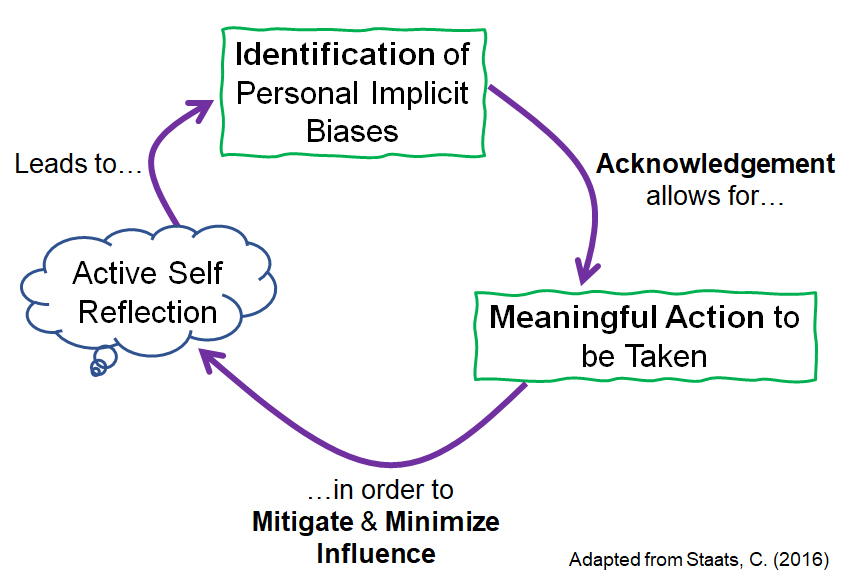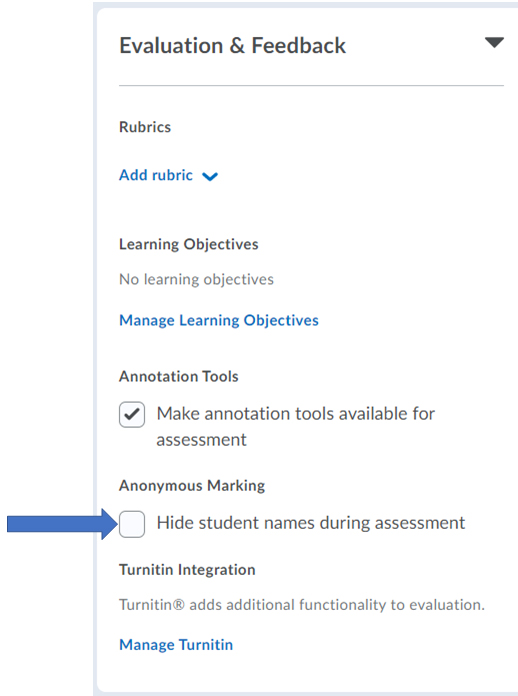Grading Bias: Making Marking More Equitable for All Learners
“As a profession, teaching is full of well-intentioned individuals deeply committed to seeing all [students] succeed.”
Staats, C. (2016)
Student learning, growth, development, and ultimate success provide most educators with the WHY behind the work done by educators. It is this genuine and authentic care for students and their well-being that requires pause and reflection upon the potential impact of personal, implicit (or unconscious) biases in teaching and learning practices. Ultimately, every learner deserves to be assessed solely on their ability to demonstrate achievement of learning outcomes by way of evaluations provided throughout a course.
Defining Implicit Bias
It might be helpful for the context of this post to consider the term “implicit bias” to encompass the idea of “unconscious bias” as well.
One simple definition is as follows:
Implicit bias can be thought of as the attitudes and/or stereotypes that impact our decision-making, understanding, and actions in an unconscious manner.
Also very important to note:
- Implicit biases often go against a person’s explicit belief system, values, and intentions.
- Everyone holds implicit biases – it is a human condition – as a result of their personal and lived experiences.
- Biases that we are not aware of can still have a significant impact on others.
“In education, the real-life implications of implicit biases can create invisible barriers to opportunity and achievement for some students.”
Staats, C. (2016)
Focusing on Grading and Assessment
While there are only a handful of studies that have attempted to directly assess the impact of biases on grading practices in higher education, there is a significant body of literature that supports the notion that a person’s implicit biases can have a strong impact on decision-making and perceptions (Malouff & Thorsteinsson, 2016). One can easily see a correlation of these with the practice of grading and assessment.
In the work of Malouff and Thorsteinsson (2016), the team focused on getting a better understanding of the potential presence of bias in educational assessment and came forward with some important findings. In the cases of assessments that were considered to be more subjective (for example, essays, oral examinations, presentations), the study found that when evaluators had knowledge of irrelevant information about the student, their grading was often biased. Examples of the types of irrelevant information provided were as follows:
- Race/ethnic background
- Education-related strengths or challenges
- Physical attractiveness
- Quality of prior performance
Nick (2017) reported that name-based bias exists in educational settings, in particular in grading practices related to more subjective assessment types. Here, he found that educators tended to assign higher grades to papers that were written by students with more traditional and familiar names as compared to students with less traditional names.
Perhaps not surprising, Meyers (2005) suggests that grading biases can be either positive or negative. This means that it is possible that an assessor will assign an inflated grade to one student based on their prior knowledge of that individual, and then might assign a lower grade to a different learner. This would no doubt contribute greatly to marks disparity and discrepancies in fairness and equity across student groups.
Minimizing the Impact of Implicit Bias in Grading
An important first step to reducing the potential impact of implicit bias in grading practices is in the simple acknowledgement that it exists. Authentic and active self-reflection is also critical, and creates opportunity for purposeful and meaningful change. Figure One describes the process that begins with active self-reflection of grading bias.

In addition to thoughtful reflection and taking action to minimize the impact of implicit bias in grading practices, faculty may use processes and tools to further reduce the persistence of bias in assessment. One such tool is an option built right into the Assignment tool within eConestoga.
Anonymous Marking in eConestoga
A powerful way of eliminating the impact of implicit bias during grading is through the practice of anonymous assessment. Here, faculty will evaluate student work without an identifying information connecting the submission to any particular learner. Decisions by the assessor related to performance and learning outcome achievement are then directly related only to the submission itself, without the possibility of prior knowledge of the learner and/or implicit bias to impact the assignment of marks.
This functionality can be easily added to assessments developed and submitted through the Course Tools > Assignments section on eConestoga (see Figure 2). It must be done before any submission of student work has occurred, so is best set at the start of the semester or when the Assignment is initially created.

One full-time Conestoga faculty shares her experience using the Anonymous Marking option:
“Turning on the anonymous grading functionality in eConestoga has ensured another level of fairness in my grading, not only within the same class but between different sections. It takes away any implicit bias and has streamlined my grading/feedback process. “
Margaret Strawbridge, School of Business
For more information or to access support with using this eConestoga tool, reach out to econestoga@conestogac.on.ca or review the document About Anonymous Marking provided by D2L/Brightspace.
More on Reducing Bias through Grading Practices
As stated in Conestoga’s Evaluation of Student Learning Policy (p.2), “Faculty must evaluate student work fairly and consistently using written rubrics and/or marking schemes.” The use of well-designed rubrics and other objective grading tools such as checklists and marking schemes, will provide a strong foundation for ensuring fairness, consistency and reliability in the evaluation of student work. By minimizing the subjective nature of assessment, the impact of implicit bias can be further reduced. In addition, these tools can often make the marking experience for faculty more efficient and enjoyable.
Teaching and Learning offers a micro-credential course (EDEV0470: Using Quick, Creative, and Consistent Grading Practices) that provides a deeper dive into rubric and grading tool creation and equitable grading practices.
Also note the Faculty Learning Hub post entitled “Creating a Rubric: Effective Practices” to help support development of valid and reliable rubrics for outcomes-based learning.
For support and/or consultation related to unbiased grading, rubric development, and the use of other grading tools, please reach out to Teaching and Learning at teachingandlearning@conestogac.on.ca.
References
Malouff, J.M. & Thorsteinsson, E.B. (2016). Bias in grading: A meta-analysis of experimental research findings. Australian Journal of Education, 60(3), 245-256.
Meyers, D. G. (2005). Social Psychology (8th ed.). McGraw-Hill.
Nick, I.M. (2017). Names, grades, and metamorphosis: A small-scale socio-onomastic investigation into the effects of ethnicity and gender-marked personal names on the pedagogical assessments of a grade school essay. Names, 65(3), 129-142.
Staats, C. (2016). Understanding Implicit Bias: What Educators Should Know. American Educator, 39(4), 29-33.



